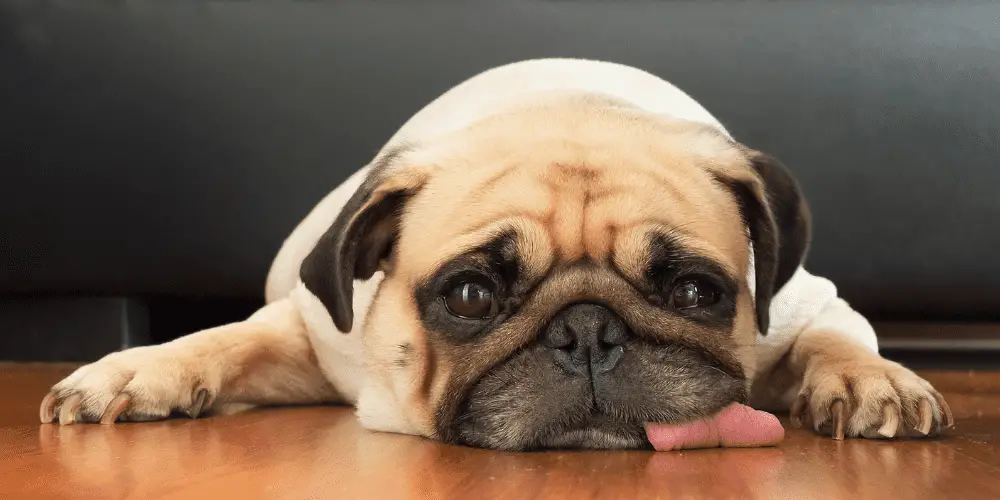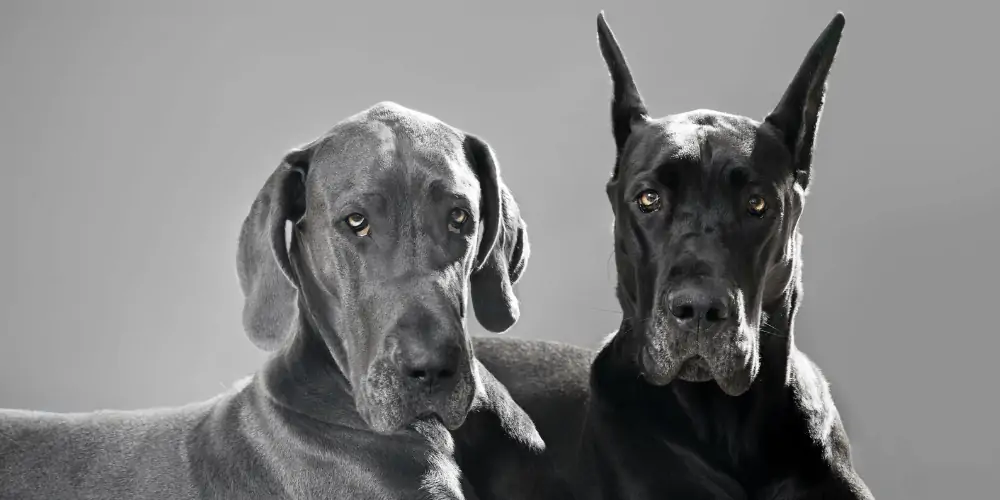Some dogs are naturally cute. Others can be threatening in appearance, but if any dog has benefited from the phrase, “it’s so ugly it’s cute,” it would have to be the Pug. Why are Pugs so ugly yet somehow so cute to their owners?
Pugs appear to be ugly due to them being bred deformed by design, harboring a condition called brachycephaly. This inherited genetic condition is the largest contributor to explaining why Pugs are “Pug-ugly” and is responsible for a slew of life-threatening health concerns.
In this article, I will go over a couple of facts about brachycephalic dogs (Pugs in particular) and some of the health risks involved with this classification of head shape.
I’ll also dive into the Chinese history of creating the breed, giving it its not-so-pleasant appearance.
But first, do you know of any dogs that are Pug-ugly?
Pug-Ugly: A Very Ugly Person
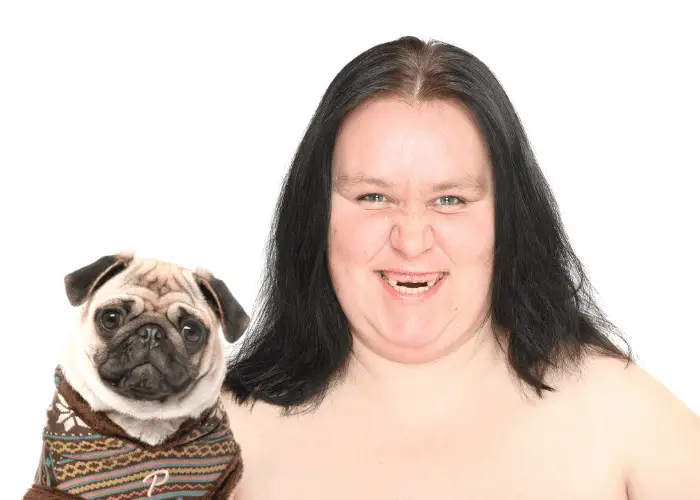
The idiom “Pug-ugly” doesn’t exist for nothing.
People widely know pugs to be ugly dogs- possibly the ugliest of them all.
If someone calls you Pug-ugly, they’re not telling you that you’re so ugly you’re cute, but rather, just ugly. Not a very nice thing to say to someone.
Of all the accomplishments that a breed may achieve, being the focal point of the description of ugliness probably wouldn’t be the reward of choice. However, it’s earned it due to its notoriously ugly looks.
You can find more about this idiom HERE.
Brachycephaly: Pug Health Risks Due to Looks
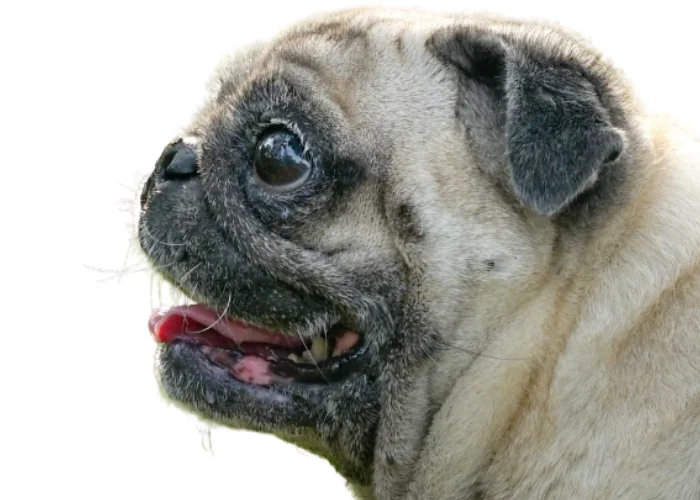
Brachycephaly facial structures in Pugs take all of the naturally lengthed breathing passages among other soft tissue and squash them into the deformed and shortened shape of the skull.
The soft tissue doesn’t shorten itself while in development to compensate for the mutated pug skull.
This causes all kinds of breathing-related issues, visual issues, and infections. Though all Pugs suffer from this inherent condition, some can be worse than others, in turn causing them to suffer more dramatically.
It doesn’t end here when it comes down to health concerns and Pugs. In fact, an entire article could be written about all of them alone.
Unfortunately, Pugs are riddled with possible health issues from head to tail (literally), and much of it is due to maintaining a certain level of fame.
Respiratory problems, eye troubles (even poor socket quality), and an increased risk of infections are all attributed to being brachycephalic. This is the number one reason to explain why Pugs have earned that “Pug-ugly” distinction.
The same adorable ugly looks of the Pug have caused a slew of health risks for the breed.
So much that reputable breeders have made efforts over the years to try and reverse some of this inherent damage caused by early breeding programs.
The Pug and Brachycephaly
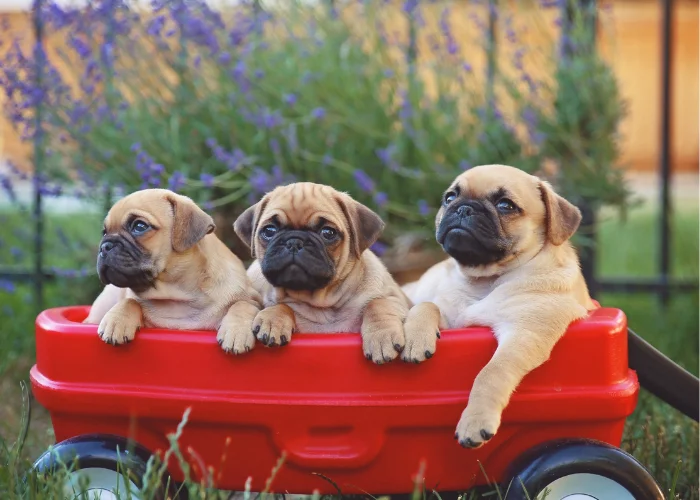
Pugs, Bulldog, Boston Terriers, French Bulldogs, Pekinese, Lhasa apsos, and Shih Tzus all share one condition called brachycephaly.
The word brachycephaly originated in Greek, meaning “short head.”
It’s an inherent defect or mutation to the bones in the skull while developing in the womb. The width of the head isn’t affected, but the length from face to snout-tip is.
This isn’t a condition that one may wind up with where another won’t. All Pugs have this, and it’s more of a classification of head type rather than just a condition.
The Pug’s flat face is one of its trademark features yet is a cause for a slew of breathing issues.
It only takes a few moments hanging around a Pug before you realize that it makes all kinds of noises when breathing, even when relaxed.
Pugs of Ancient China

Pugs are playful, silly, comical, and at times, quite rambunctious. Their personality certainly bursts through their little frame more often than not.
The Pug we know today makes it extremely tough for us to imagine the regal origins of this little breed.
Their origin dated back as early as 400 B.C. and was bred specifically to be companions to the wealthy and to be in the company of royalty.
The Emperors of China so cherished these dogs that they’d even have guards stationed to protect them! Pugs were also held in high regard by Tibetan Buddhist monks, who allowed them to roam freely within their monasteries.
This is one of only a few ancient breeds specifically bred to be companion dogs and nothing else. Its charm, wit, affection, and longing for attention won their hearts and stapled them into history as beloved family members.
All that being said, their popularity with royalty and otherwise the wealthy were the cause for its most distinguishing feature- their forehead.
The “Prince’s Mark” of the Pug

Due to the link between the Pug and ancient royalty, breeders of the day toiled to exaggerate the wrinkles on their forehead to replicate what is called the “Prince Mark” that we can find just above the eyes, atop of the forehead.
To better understand what they were looking for in the Pug, the mark looks like a capital “I” with the bottom line slightly extended on both sides and a line going through the middle that’s of equal length to the shorter top line.
In other words- a big-bottomed capital I with a line going through the middle of it.
Of course, they would never get it exactly line for line but did achieve to make it as similar as possible. The breeding that took place to get this mark embedded into their forehead wound up shaping the breed’s head into what we’re familiar with today.
So, to sum it all up, the ugliness that we can behold as we gaze upon the face of a Pug is due to hardcore focus on one area of an already fascinating dog.
Its unique look alongside its larger-than-life character caused the breed’s popularity to spread like wildfire as soon as China began trading with the west around the mid-1500s.
All for the Sake of Cuteness (or Excessive Ugliness)

Breeders have historically bred Pugs to have as squished of a face as possible.
Why?
Because people think it’s cute, and will pay a lot of money for them.
A modern-day version of the reasoning behind Chinese breeders of old.
When cuteness trumps healthiness, problems will be compounded unnecessarily.
Unreputable breeders will send unhealthy pups with unhealthy genetics to mix into the population- resulting in the breed getting more and more unhealthy as the decades pass.
Fortunately, people are striving to reverse some of these issues through aggressive breeding programs to ease this breed’s condition of brachycephaly as much as possible while still maintaining a recognizable Pug look.
Final Thoughts
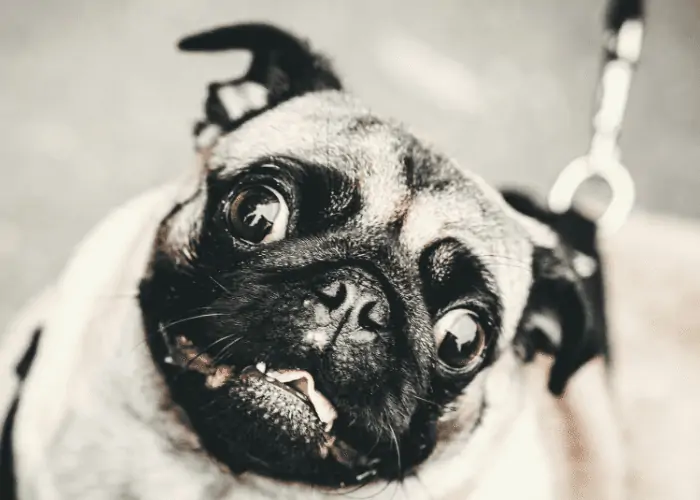
Being ugly comes with its costs, I guess.
But evidently, to be so ugly you’re cute isn’t just costly; it’s downright dangerous. At least this is proven true with the popular Pug.
One can only hope that the breeding programs are effective in reversing some of this damage genetically.
It would be nice if future generations could enjoy all of the positive traits that the breed has impressed people with for thousands of years- even if it’s not quite as ugly as it used to be.

